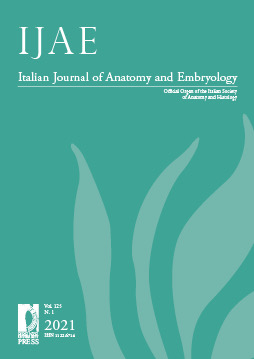Published 2022-04-29
Keywords
- Hippocampus,
- hippocampal atrophy,
- aging
How to Cite
Abstract
Objective (or background): The hippocampus is a thoroughly studied structure of the temporal lobe. In contrast to our current knowledge of hippocampal anatomy, neurophysiology and pathophysiology, scientific literature on the relationship between the hippocampal size and age is limited. Our study aims to further the understanding of this relationship. Methods: 16 hippocampi were anatomized, photographed, measured and analyzed in comparison to age and gender using Pearson and bootstrap analyses with IBM SPSS®. Results: The results for all three independent variables of size, age and gender were not statistically significant. Conclusions: We were unable to show a statistically significant result on the correlation between the size of the hippocampus and age due to small sample size.



